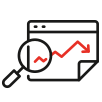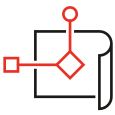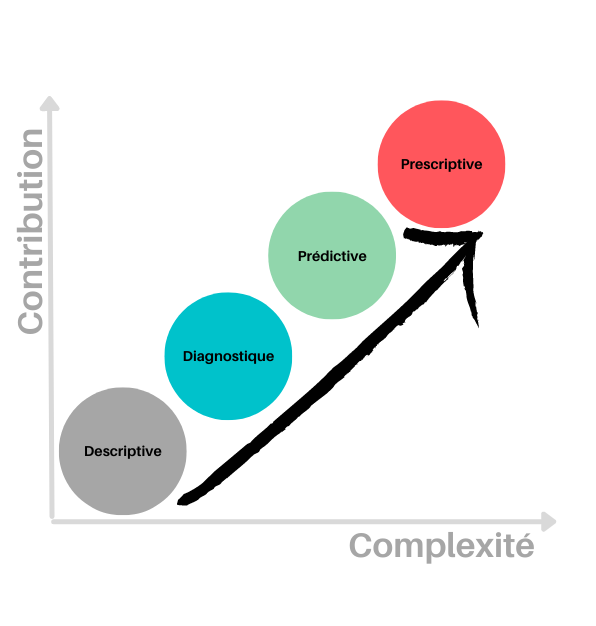@Copyright 2019 Numea
The increasing amount of data available allows companies to optimize the reach and effectiveness of their business strategies. However, the level of analytical maturity of a company must be taken into account in order to develop a strategy adapted to existing capabilities and resources, as well as to business needs. As each task has its tool, each business need must be well defined in order to identify the right analysis to perform:
There are 4 types of analyses:
| Descriptive | Diagnostic | Predictive | Prescriptive |
| Descriptive analyses: what happened? | Why did this happen? | What will happen? | What to do? |
| Describe what has happened in the past. | Identify the factors that contributed to a past result in order to explain it. | Estimate what is likely to happen in the future, based on history | Recommend actions to be taken to influence likely events to occur in the future. |

Descriptive analytics are usually the first step in the analytics journey. These often take the form of univariate analyses such as the calculation of frequencies, sums or averages and make it possible to answer fundamental questions such as:
Descriptive analytics are often used to paint a past picture of performance and add to our understanding of market dynamics, customer base and business. Once these are well assimilated, we will then seek to understand the factors that influence performance by conducting diagnostic analyses.

Diagnostic analytics are used to understand and explain why certain events occur. We can try to determine why last month’s sales are lower than the previous year or why some of our customers have a higher satisfaction rate than others. To perform these analyses, different data sources can be accessed, such as sales or web traffic data, marketing budgets, product availability logs, and customer satisfaction and experience metrics. Once correlations are established, an analyst will be able to infer as to the factors that influence the metrics of interest, as well as their importance. For example:
These analyses therefore help to develop our understanding of the data by adding an explanatory component to it. However, as with descriptive analyses, its scope remains retroactive. A predictive approach will allow us to take advantage of these learnings and anticipate how certain future conditions could impact our key metrics.

Predictive analytics uses statistical and machine learning techniques to estimate how the relationships between different elements and a target variable can be dissected to predict a future event. These analyses often seek to make a prediction rather than explain a cause-and-effect relationship. Predictive analytics requires a vast amount of data to ensure the stability of predictions in different contexts, as well as certain optimization activities over time to maintain their effectiveness. Through these, an analyst can help to:
Predictive analytics therefore use the findings and insights collected during the descriptive and diagnostic phases to build models to estimate future results. While these analyses are useful in themselves, one could then turn to the use of prescriptive analyses to explore how different actions can promote a future outcome.

Prescriptive analytics identify actions to take to maximize or minimize desired value. The objective behind a prescriptive analysis is to promote the best possible result according to the business need, the available resources and the objectives sought. These analyses also require a vast amount of data and iterated models must be continuously supported in order to optimize their performance. For example, these analyses make it possible to:
Contribution and complexity of analyses:

In conclusion, we might be led to believe that prescriptive analysis is the most interesting since it tells us what to do! However, since the latter is the most complex to carry out, it must be remembered that the other analyses also have their usefulness. It is often repeated at Numea, but complexity is not synonymous with relevance!
Exploit the full potential of your data by contacting our experts at Numea!
Sources :
@Copyright 2019 Numea